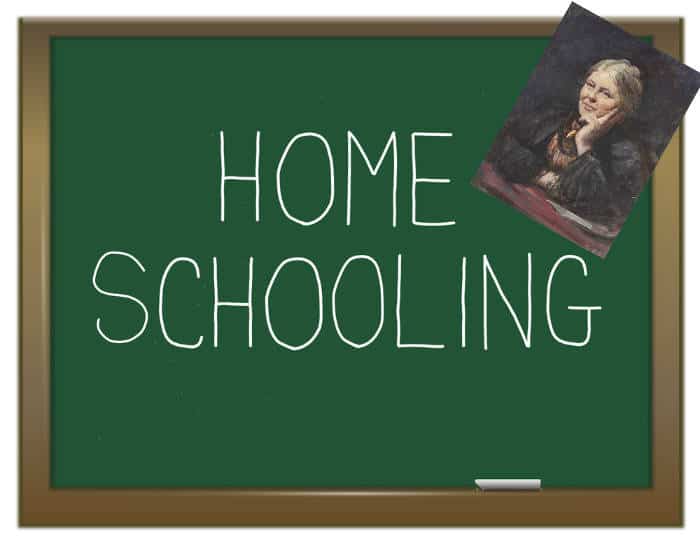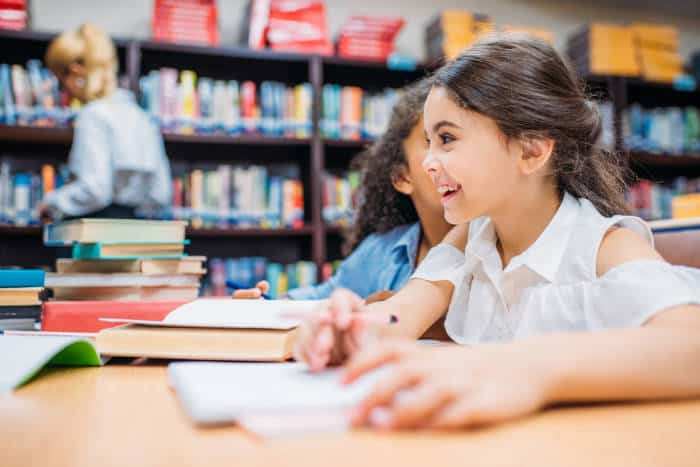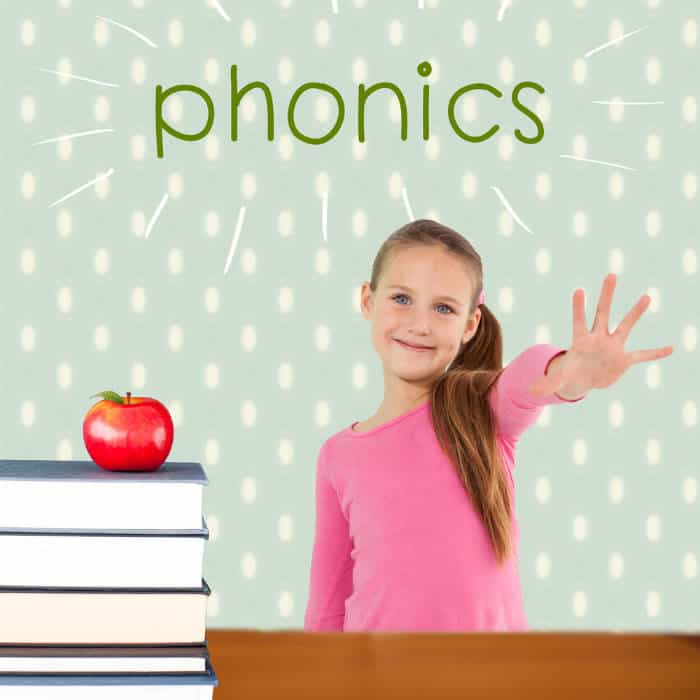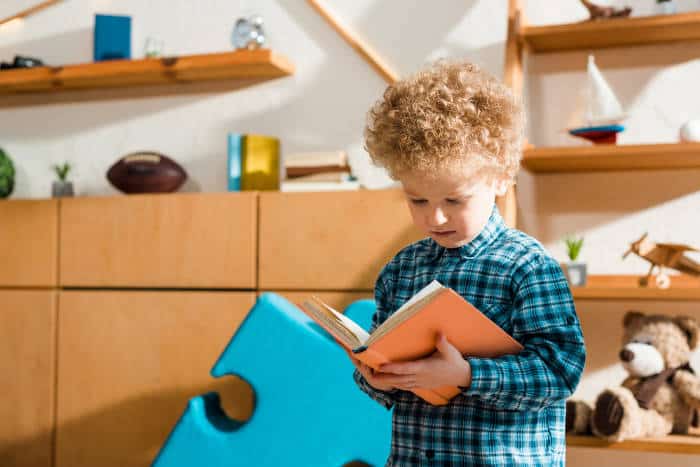When you first set out to homeschool room, you may have an image of the traditional concept of a public school classroom stuck in your head. You know, the desk, the blackboard, the neat/sterile decorations with white walls and bright lights.
That’s fine. But if you don’t have to learn an environment like that, and you have the freedom to make your own, wouldn’t it be nice to have a personalized learning space that feels good for you and your child?
I mean, it’s your space! You don’t have to fit it into a cookie cutter image of a classroom. And given the many types of homeschool styles and curriculums, there’s good reason to personalize your homeschool space.
Table
Even if you prefer unschooling, you might need a surface to write on at some point. If you have a little tribe of homeschoolers, that might look like a big table with a few chairs around it or, maybe you’ve splurged for individual spaces, complete with names and their own favorite decorations.
There’s something to be said for having a separate, homeschool room or area away from the kitchen or dining room table. Putting the learning space aside, sets the stage for success. If you’re in the market for a little inspiration, check out some of these ideas for homeschool tables.
Shelves
Papers, books, games, workbooks, crayons, markers, glue, craft projects…It’s no secret homeschooling can lead to a bunch of “stuff.” And while that’s great for creating a creative and homy space, you might want to clear the clutter and contain it sometimes.
That’s why shelving and storage cubbies are a homeschooling room essential. It doesn’t matter if your craft project was painting rocks on your hike through the woods or a complex diorama of the solar system. You need somewhere to store it. Let’s not forget all the printouts from the curriculum guides either. Chances are, you’ll have quite the collection of three-ring binders laying around.
It can feel like a lot. But never fear, there’s an endless supply of storage inspiration to choose from. Have a look at our favorite shelving systems before you decide to go shopping!
Storage for Art Supplies
Creating is a huge part of almost every type of homeschool curriculum. It might look different with structured craft time in one space, or multimedia art madness in another, but chances are, you need an organized way to store your supplies. You don’t want non-toxic crayons spilling onto the floor or bottles of paint leaking onto important papers.
That’s why you need a craft supply organization that’s easily accessible for you and your child. If they’re able to put things away without too much assistance from you, it will save you time and many, many headaches. Plus, letting them put away their own supplies is a good lesson in responsibility.
For ideas on how to incorporate storage for art supplies into your learning space, check out some of these these organization ideas!
White Board/Chalkboard/Bulletin Board
Your homeschool room might not look like a typical classroom, but some components of public school might be worth keeping. You’ll undoubtedly need to write something on a board at some point. Whether it’s a chalkboard your children can reach for their own colorful masterpieces, a white board for complex math problems, or a bulletin board to display educational printouts and posters, boards are useful. Some of the best kids easels will double up as chalkboards.
For inspiration of how you’d like to incorporate boards into your homeschool room, check out some of these sweet setups.
Cushy Chairs
Kids love to move. They learn through play and fidgeting is second nature. So, while regular desk chairs are great for part of the time, why not provide them with fun, cushy chairs they can lounge in for reading and music study?
Wall Decorations
Posters, infographics, and interactive artwork are great references when learning. You can have some staples that you keep up all year long. For example, you might want to leave multiplication tables up on the wall until your child masters them. However, cycling out decorations is also an awesome way to keep your child interested and stimulated. The key is to keep it relevant to your child’s interests and levels. Check out these fun displays for some ideas.







